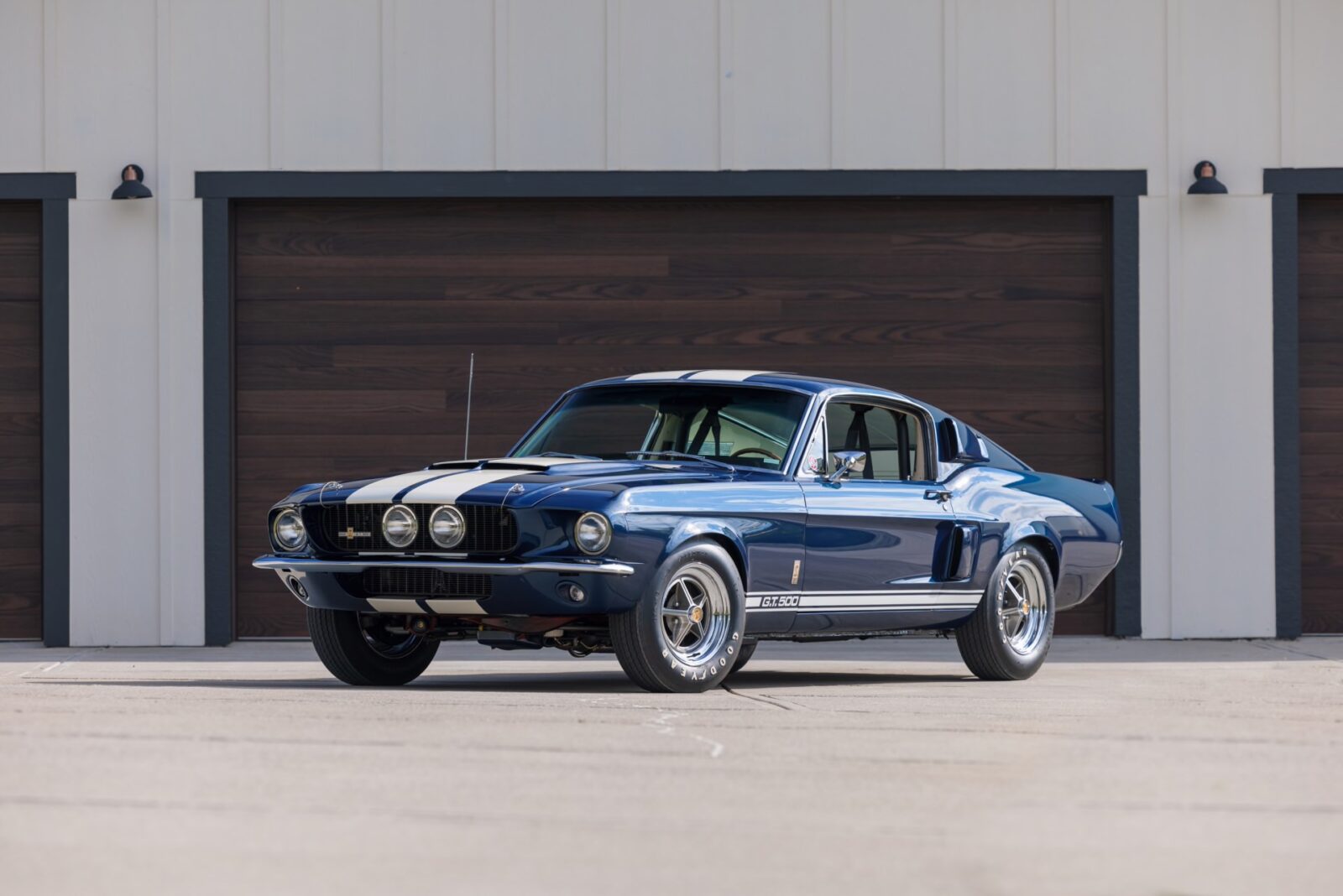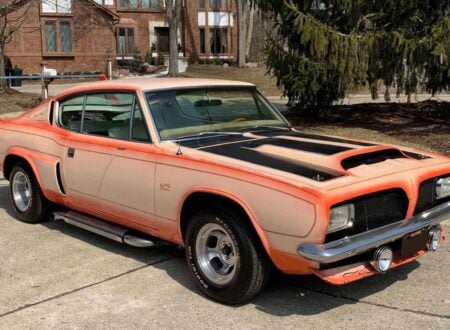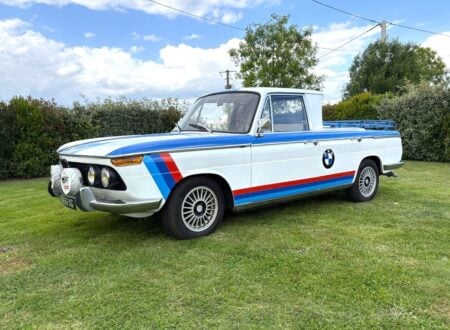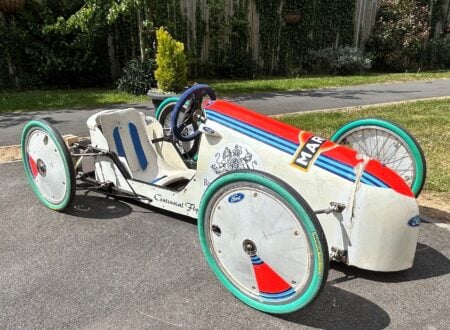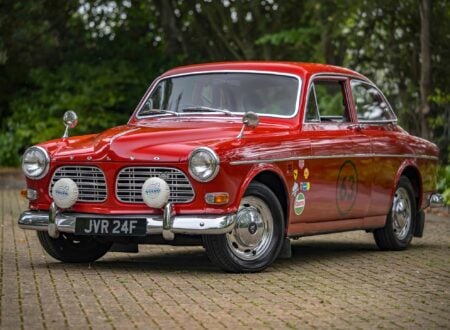This is an original and recently restored 1967 Shelby GT500. Upon the release of the GT500 Carroll Shelby said “this is the first car I’m really proud of” – which is remarkable when you remember that he’d already released the Shelby Cobra and the Shelby GT350.
The GT500 was powered by a 355 bhp 428 cubic inch (7.0 liter) Police Interceptor V8, the model would shoot to fame decades later as “Eleanor” in the 2000 film Gone in 60 Seconds starring Nicolas Cage, Angelina Jolie, Robert Duvall, and Vinnie Jones.
Fast Facts – The 1967 Shelby GT500
- The Shelby GT500 can trace its roots back to the Shelby GT350, which was introduced in 1965. The GT350 was a high-performance version of the Ford Mustang created by Carroll Shelby, a former race car driver turned entrepreneur. Shelby was tasked by Ford with turning the Mustang into a race and championship-winning car, and he succeeded.
- In 1967, Shelby introduced the GT500. While the GT350 was primarily aimed at being a no-holds-barred race car, the GT500 was more of a high-performance grand tourer that was powered by a 428 cubic inch (7.0 liter) Police Interceptor V8 rated at 355 bhp.
- The GT500 had unique styling to differentiate it from regular Mustangs, including a special grille, elongated nose, and other Shelby-specific touches. Inside, the GT500 had added comforts over the GT350, making it a more appealing option for those who wanted some additional luxury.
- The car you see here is a first-year 1967 Shelby GT500 that benefits from a full restoration that was completed in 2021. It’s a desirable 4-speed manual transmission car and it comes with a deluxe Marti Report.
The Shelby GT500: A History Speedrun
The story of the Shelby GT500 begins with Carroll Shelby, a former Le Mans-winning race car driver who later turned his hand to building low-volume, high-performance vehicles in California. What started as a cottage industry would become a global phenomenon, and Shelby would produce some of the most memorable V8 sports cars of the 1960s.
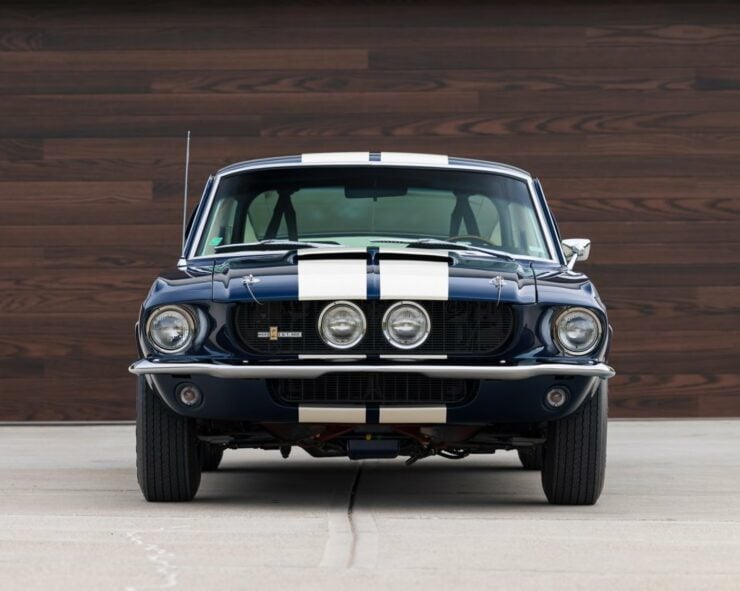 The 1967 Shelby GT500 has one of the most famous front ends in motoring history, thanks in no small part to the model’s appearance in the 2000 film Gone in 60 Seconds.
The 1967 Shelby GT500 has one of the most famous front ends in motoring history, thanks in no small part to the model’s appearance in the 2000 film Gone in 60 Seconds.After partnering with Ford in the early 1960s to create the Shelby Cobra, a car that combined a lightweight British AC Ace body with Ford’s 260 cubic inch V8 engine (subsequently followed by the 289), Shelby entered into a new agreement with Ford to develop a racing version of the Mustang, which at the time was still a relatively new vehicle.
Ford aimed to tap into Shelby’s racing expertise to create a Mustang variant that could compete against Chevrolet’s Corvette on track, as well as create a halo car for the consumer market. As a new vehicle, the Mustang didn’t get have any racing pedigree, but Shelby would set that right very quickly – Shelby GT350s won the SCCA B-Production championship for three straight years between 1965 and 1967.
Introduced in 1967, the first Shelby GT500 was a more powerful vehicle with a 428 cubic inch Police Interceptor V8 under the hood producing 355 bhp. This behemoth of an engine, paired with a Holley four-barrel carburetor, ensured that the GT500’s performance was a significant step above the earlier GT350, in a straight line at least.
Externally, the GT500 had various minor design changes including a lightweight fiberglass front end, an elongated nose, and a larger hood scoop. These were not merely for aesthetics, they were said to improve the vehicle’s aerodynamics and provided better airflow into the engine bay.
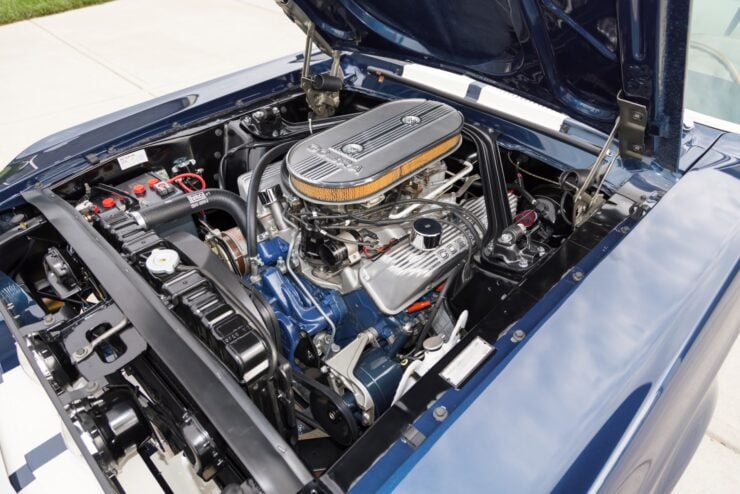 The GT500 is powered by 428 cubic inch Police Interceptor V8, producing 355 bhp. It sends power back through a 4-speed manual transmission to the rear wheels.
The GT500 is powered by 428 cubic inch Police Interceptor V8, producing 355 bhp. It sends power back through a 4-speed manual transmission to the rear wheels.In an era characterized by cultural revolutions, space exploration, and the explosion of pop culture, the Shelby GT500 made its own indelible mark. Its presence in movies, music, and media made it a symbol of Americana.
The Doors + Gone in 60 Seconds
In 1969 Jim Morrison of The Doors famously crashed his GT500 into a lamp post on Sunset Boulevard, he left it there but when he returned later it was a gone. The car has never been rediscovered, though many have searched for it, and it remains one of the most enduring American automotive mysterious of the time.
The GT500’s short production run in the late 1960s (from 1967 to 1970) only added to its mystique. Its limited numbers have resulted in it being highly sought-after by collectors and enthusiasts, and today, it remains one of the most revered and valuable American cars of its era.
In the year 2000 the film Gone in 60 Seconds was released starring Nicolas Cage, Angelina Jolie, Robert Duvall, and Vinnie Jones. It included a famous scene with a Shelby GT500 called Eleanor (replicas were used for filming due to cost constraints), and scenes with the car became the most memorable parts of the film.
Above Film: “An American Pastoral” is a film by Jim Morrison, Frank Lisciandro, Paul Ferrara, and Babe Hill. It stars Morrison as a hitchhiker as well as his now-missing Shelby GT500. It’s s a 50 minute experimental film in Direct Cinema style. It was shot during the spring and summer of 1969 in the Mojave Desert and in Los Angeles.
The Shelby GT500 would return for the 2007 model year, it was based on the then-new Mustang platform and aimed to channel the spirit of the original. In the years since there have been a handful of other new GT500s released, all of which have proven popular but none have yet achieved the status of the original.
The 1967 Shelby GT500 Shown Here
The car you see here was bought by the current owner and now seller in 2017 as a stalled restoration project. The rebuild was then completed in 2021, and the car presents today just as it would have when leaving the factory, with a copy of window sticker, a copy of the dealer invoice, and a deluxe Marti Report.
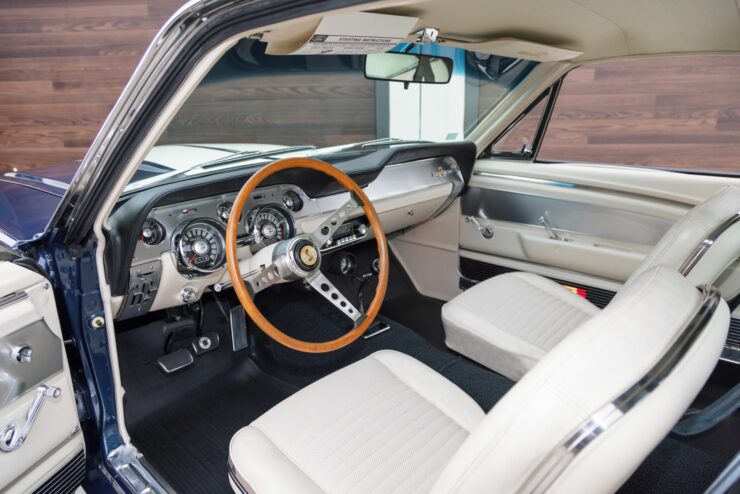 This car has a rare “Parchment Comfort Weave” interior, estimated to have been used on just 8% of all Shelby production in 1967.
This car has a rare “Parchment Comfort Weave” interior, estimated to have been used on just 8% of all Shelby production in 1967.The may sell for less than a comparable 1967 GT500 due to the fact that the original numbers-matching block is no longer in the car. It’s now powered by a rebuild engine and heads made using a replacement block and heads, though January date-original heads are also included.
This engine is mated to a 4-speed manual transmission and the car is finished in Nightmist Blue with White Le Mans stripes, it rides on Kelsey Hayes wheels, and it’s listed as Shelby No. 00706.
If you’d like to read more about this car or register to bid you can visit the listing here on Mecum. It’s due to roll across the auction block with them in early October and at the time of writing there is now price guide listed.
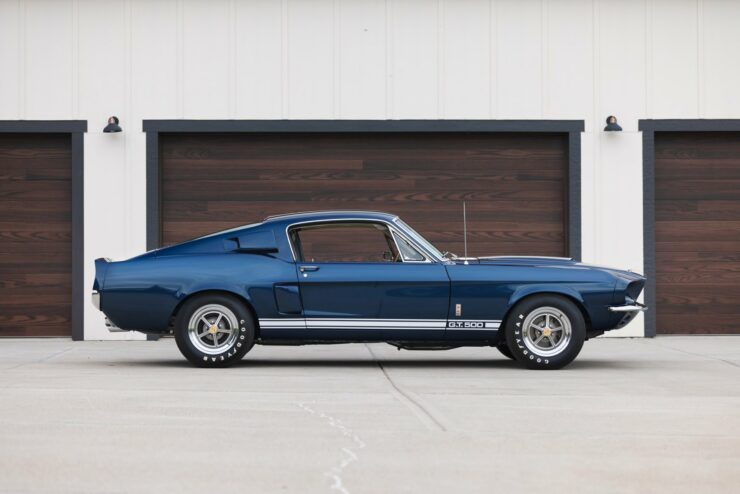
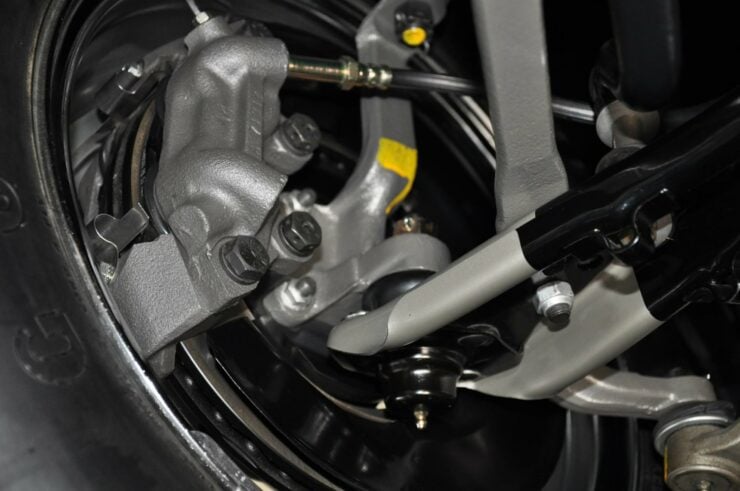
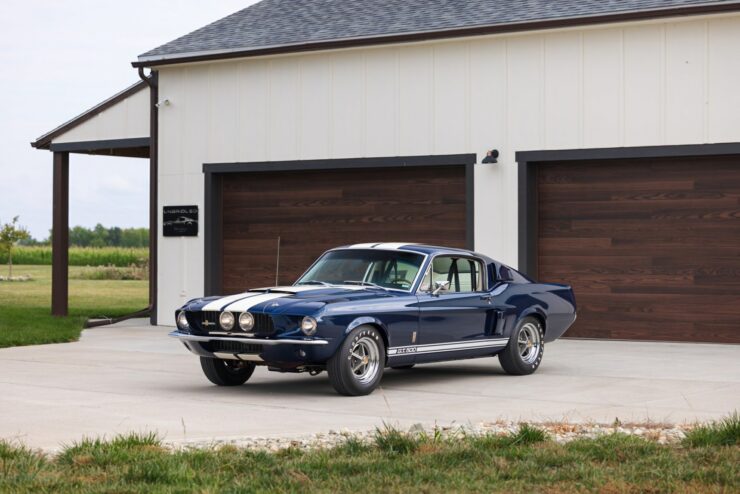
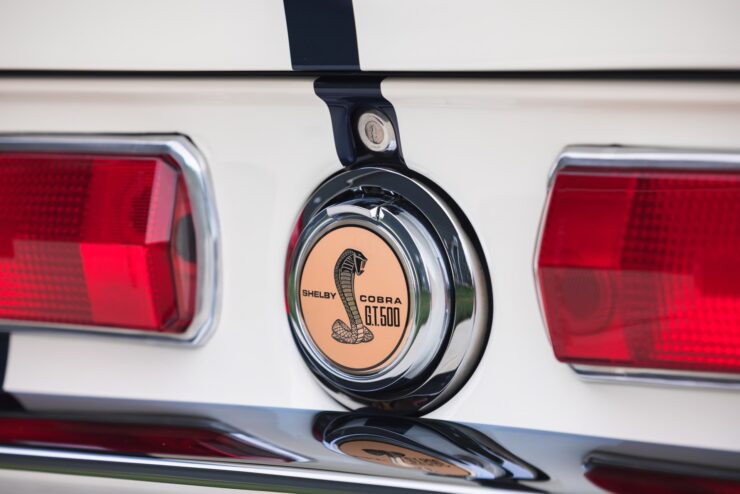
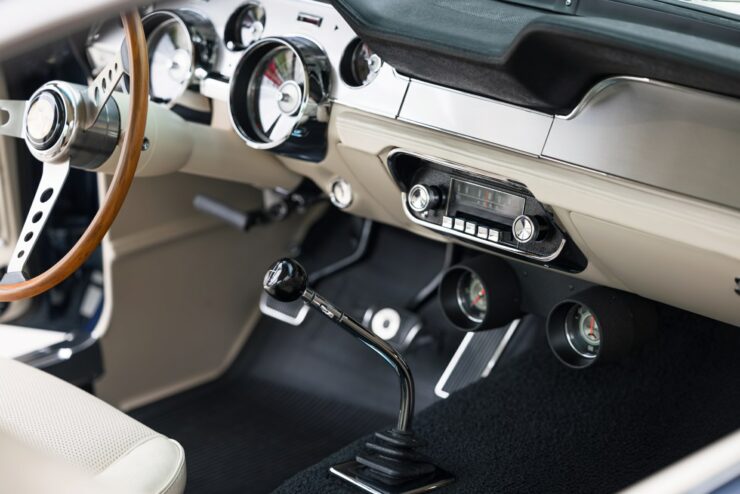
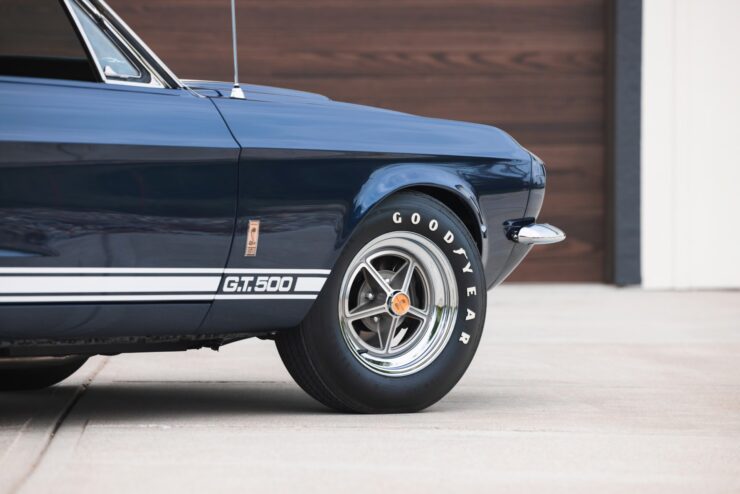
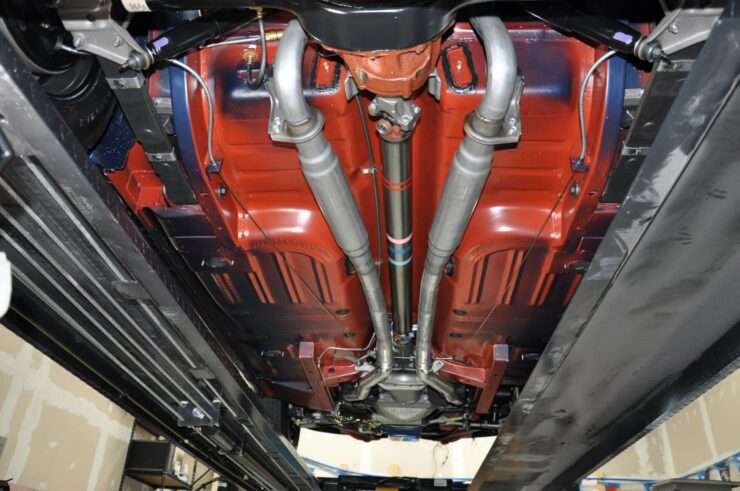
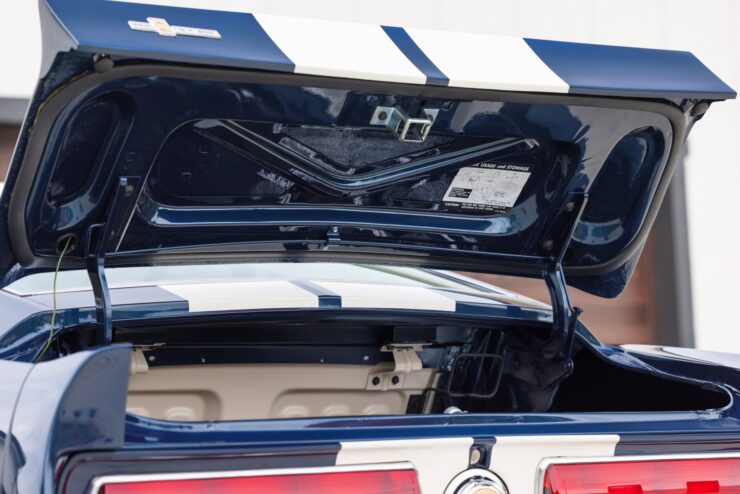
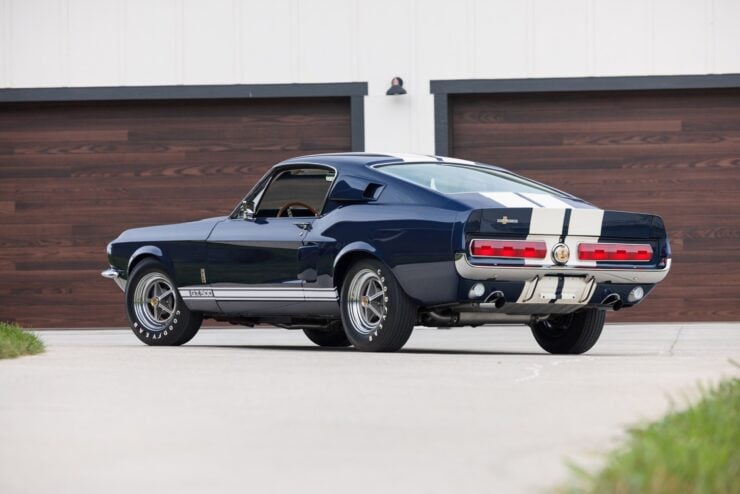
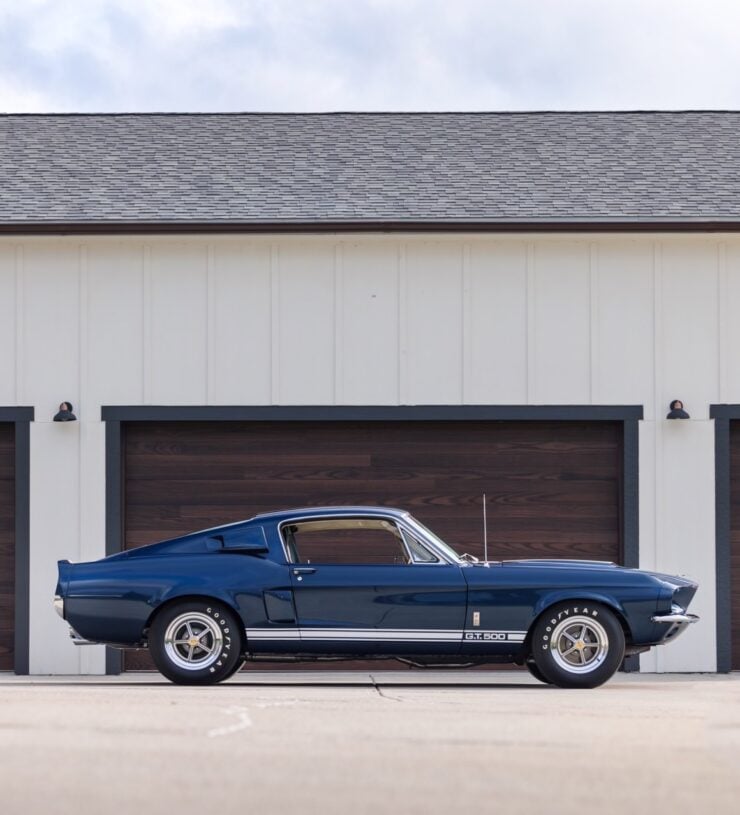
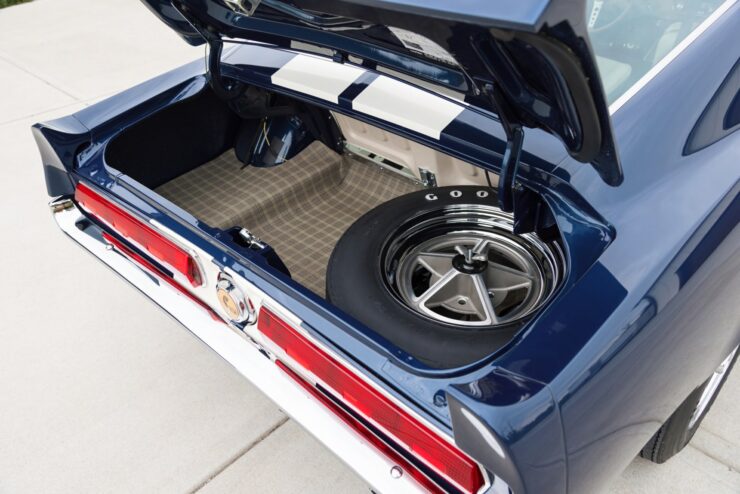
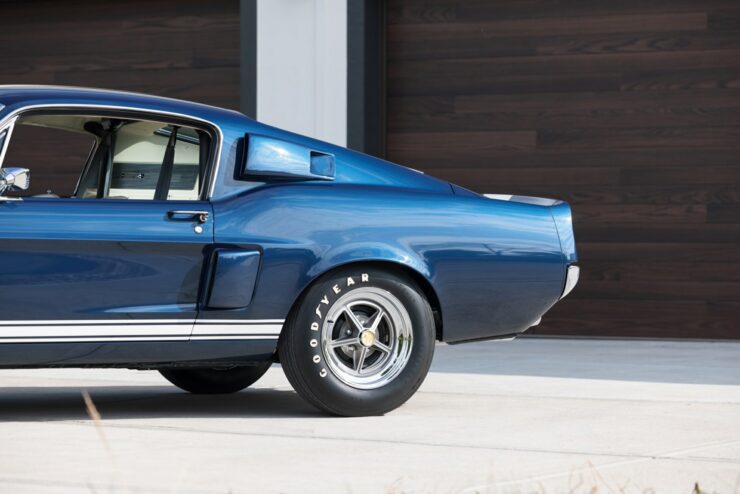
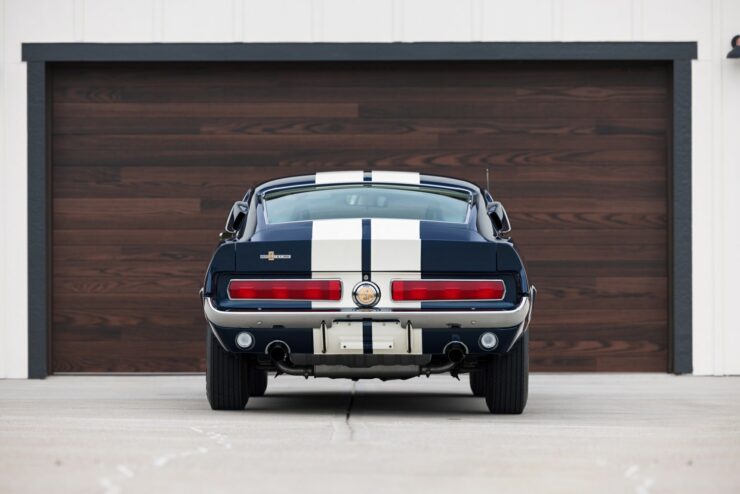
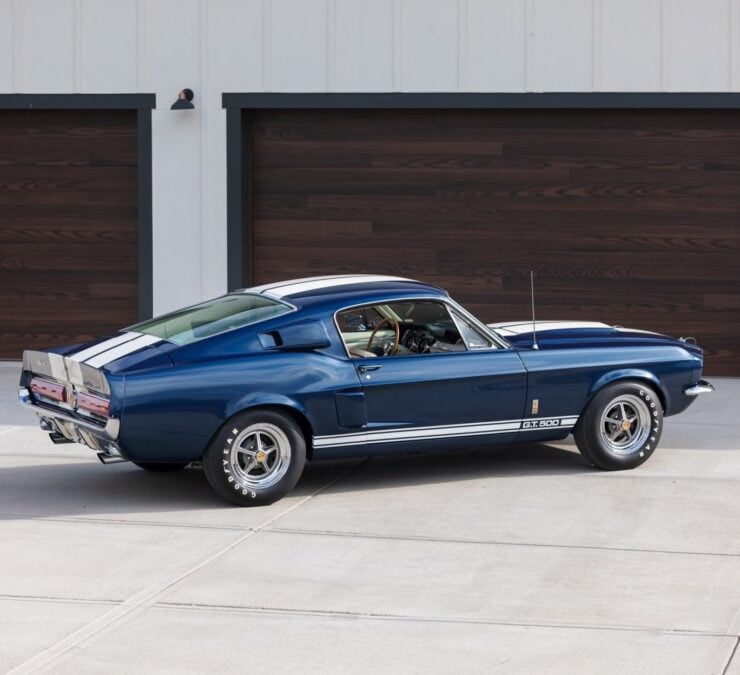
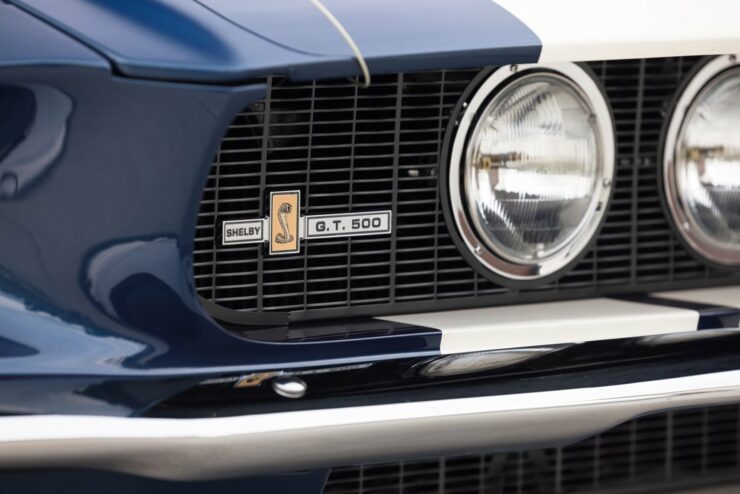
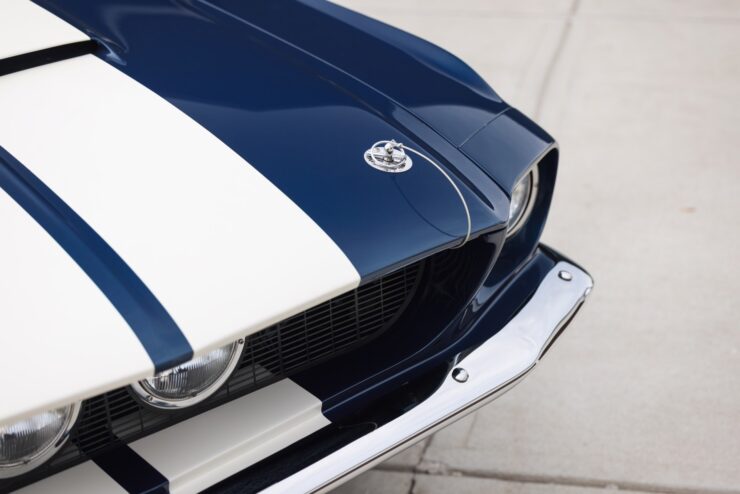
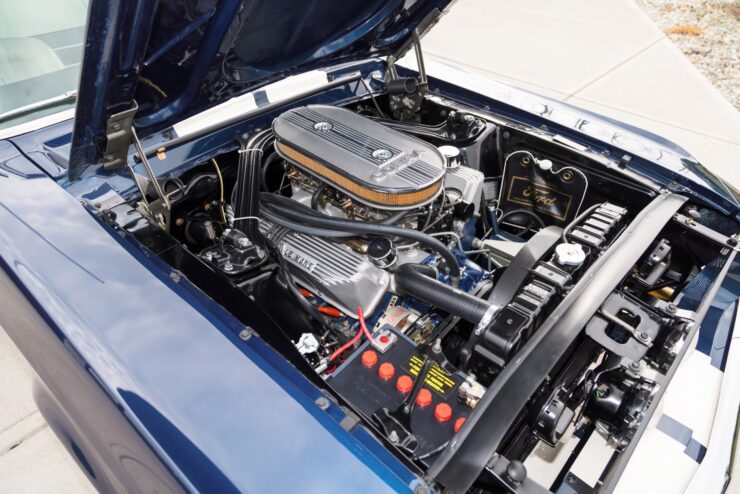

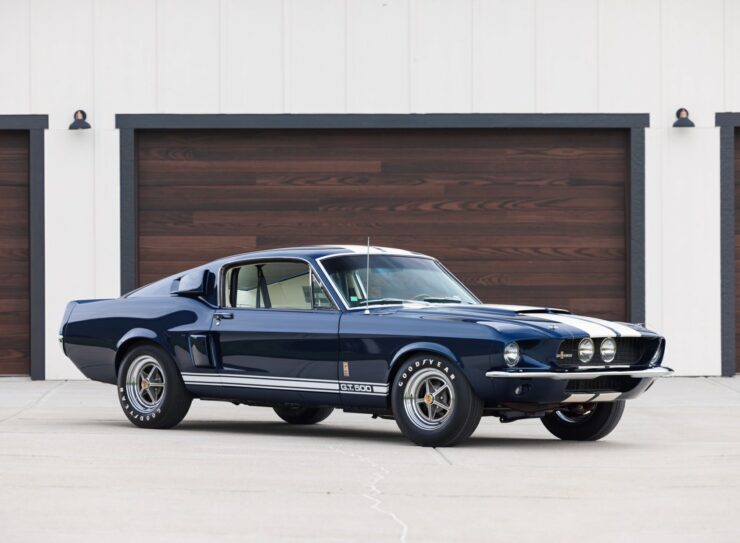
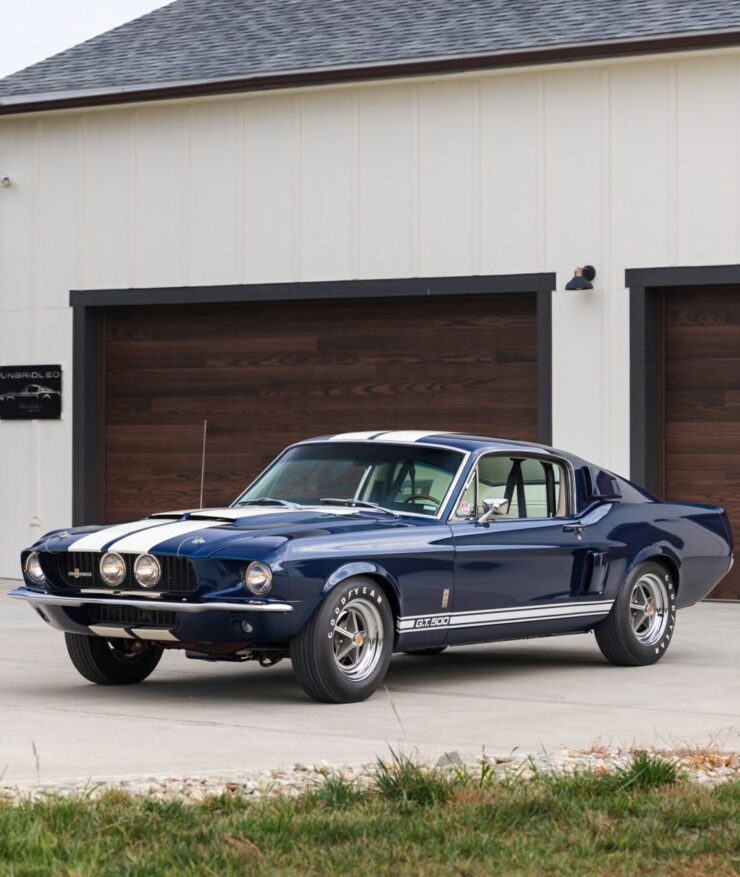
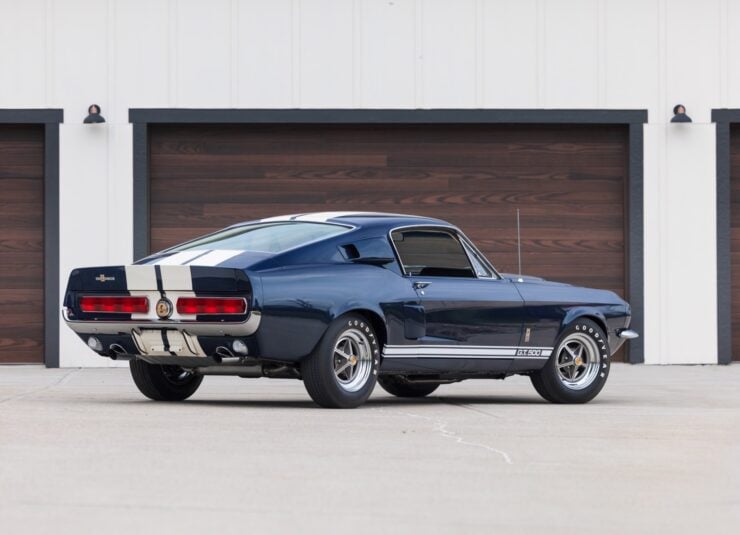
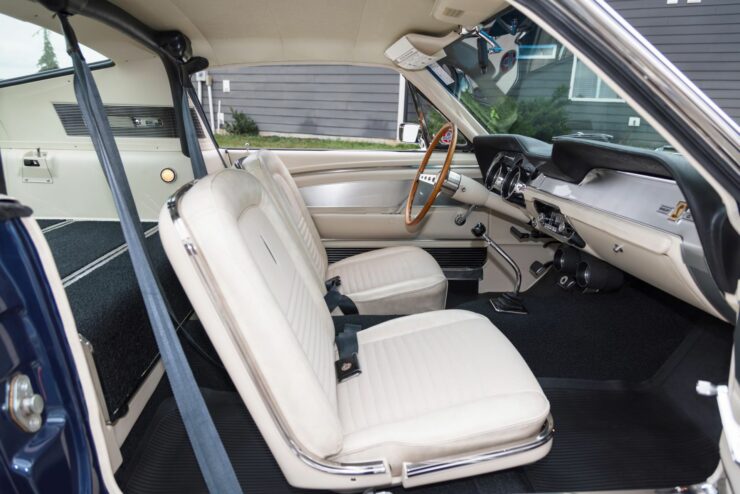

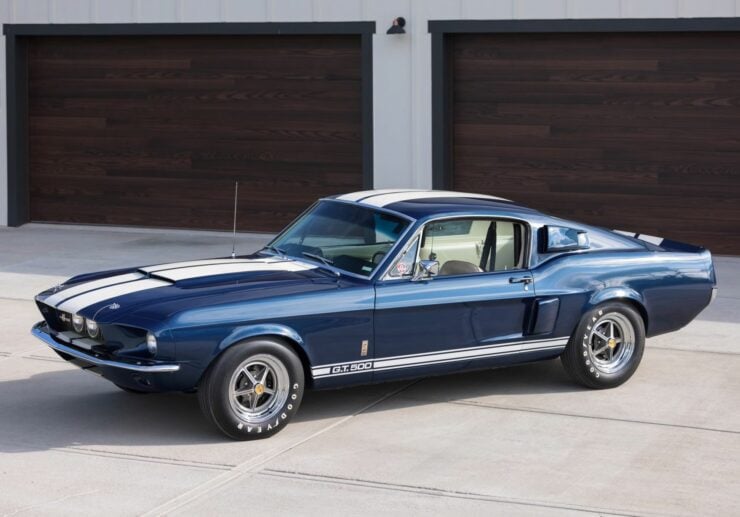
Images courtesy of Mecum

